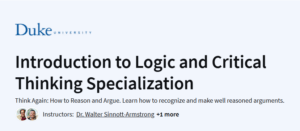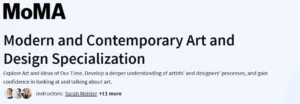What you will learn in Seeing Through Photographs Course
Understanding Photographs: Explore how photographs are made, considering the choices and processes involved.
Contextual Analysis: Learn how context influences the production, circulation, and reception of photographic images.
Interpretation Skills: Develop the ability to interpret photographs critically, understanding their meaning beyond the surface.
Visual Literacy: Enhance your skills in looking at and discussing photography, finding inspiration from photographs around you.
Program Overview
Introduction to Seeing Through Photographs
⏳ 1 hour
- Overview of the course and introduction to the study of photographs.
The Power of Context
⏳ 2 hours
- Understanding how the context of a photograph affects its meaning and interpretation.
Photographs as Objects
⏳ 2 hours
- Exploring the physicality of photographs and their role as objects in art and culture.
The Role of the Photographer
⏳ 2 hours
- Analyzing the choices and intentions of photographers in creating images.
Photographs and Society
⏳ 3 hours
- Examining the impact of photographs on society and their role in shaping perceptions.
Photographs in the Digital Age
⏳ 2 hours
- Discussing the evolution of photography in the digital era and its implications.
Final Project
⏳ 3 hours
- Applying the concepts learned to analyze and interpret a photograph of your choice.
Get certificate
Job Outlook
Enhances skills relevant for careers in photography, art curation, journalism, and media.
Provides skills in visual analysis, critical thinking, and communication, valuable in various creative and media professions.
Completing this course can bolster qualifications for roles requiring expertise in visual culture and media literacy.
Specification: Seeing Through Photographs
|
FAQs
- No prior photography experience is required.
- Focuses on understanding, interpreting, and analyzing photographs.
- Suitable for beginners, students, and anyone interested in visual culture.
- Encourages critical thinking about images in historical and cultural contexts.
- Teaches methods for analyzing visual elements and composition.
- Explains historical, cultural, and social contexts of images.
- Helps learners identify symbolism, themes, and narratives.
- Encourages deeper engagement with photographs beyond surface aesthetics.
- Enhances understanding of composition, perspective, and visual storytelling.
- Provides examples from historical and contemporary photography.
- Encourages reflection on artistic choices and narrative techniques.
- Supports creative growth and informed photographic decision-making.
- Explores historical development of photography and key movements.
- Discusses cultural and political significance of images.
- Analyzes how photography shapes public perception and memory.
- Encourages critical thinking about ethical and societal implications of images.
- Builds skills in visual analysis and critical thinking.
- Applicable to careers in media, art curation, education, and photography.
- Helps learners interpret and communicate meaning effectively through visuals.
- Provides foundational knowledge for further study in photography, visual culture, or media studies.





